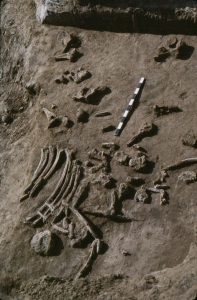
Statistical analysis by University of Wyoming researchers shows wide variation in the rates at which the bones of ancient animals in the Americas have been lost.
Considerably more of the fossil record of creatures such as mammoths, mastodons, camels, horses and ground sloths has been lost in what is now the continental United States and South America than in Alaska and areas near the Bering Strait. That variation complicates efforts to reconstruct the population sizes of those species across North and South America, conclude Professor Todd Surovell and graduate student Spencer Pelton in UW’s Department of Anthropology.
“While bone preservation in Arctic regions is aided by cold temperatures and the presence of permafrost, considerably more bone has been lost over time in regions farther south — in fact, at a faster rate than the sediments in which they were deposited have eroded,” Surovell says. “That means researchers must adjust for those differences as they estimate the numbers of these animals, many of which are now extinct, across the Americas.”
The research appears today in Biology Letters, a Royal Society journal that publishes short, highly innovative, cutting-edge research articles and opinion pieces accessible to scientists from across the biological sciences.
Surovell, whose past research has linked human hunting to the extinction of large mammals in the Americas, conducted the latest study by compiling radiocarbon dates of bones from animals of the Pleistocene era, which ended just under 12,000 years ago. He and Pelton also looked at the rates at which sedimentary deposits were lost over time.
While cautioning against applying their conclusions to the fossil record before or after the Pleistocene, the researchers suggest further research into the differences in the rates at which animal bones are lost from region to region.
Reference:
Todd A. Surovell, Spencer R. Pelton, Spatio-temporal variation in the preservation of ancient faunal remains. DOI: 10.1098/rsbl.2015.0823
Note: The above post is reprinted from materials provided by University of Wyoming.










